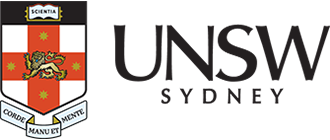Hitachi TM4000Plus Benchtop SEM

Description
The Hitachi TM4000Plus benchtop SEM is a user-friendly yet powerful tool for imaging and microanalysis. The microscope offers high, medium, and low vacuum settings, accommodating a wide variety of sample types. It’s equipped with a secondary electron (SE) detector for detailed surface imaging and a backscatter electron (BSE) detector for imaging and analysing material compositions. The microscope can also generate multiple directional images with the segmented BSE detector, which can be used in the Hitachi Map3D Software to create 3D images of sample surfaces. This SEM operates at accelerating voltages of 5-20 kV and is integrated with a Bruker SDD-EDS detector for rapid, spatially resolved elemental microanalysis.
Specifications
-
- TEM Grid/STEM holder
- SEM pin stub holder
- Cross section holder
- Wafer holder
- STEM holder
-
- 10x – 100,000x (max. useful magnification ~20,000x)
- 25x – 250,000x (monitor display magnification)
-
- Gaseous secondary electron (SE) – can be used in high vacuum mode as a cathodoluminescence (CL) detector
- Backscatter electron (BSE)
- Silicon drift detector – energy dispersive X-ray spectroscopy (SDD-EDX)
-
- 5kV to 20kV (in 5kV intervals)
-
- Tungsten filament
-
- Slow
- Fast
- Reduced area
-
- Quick Save
- Standard Image
- Tile-Stitching Imaging
- High-Profile 3D surface image
- EDX Mapping
Publishing Microscopy Data Acquired on the Hitachi TM4000Plus SEM
-
-
- Chemical fixation, dehydration, critical point drying
- Mounting in resin
- Staining
- Polishing
- Mounting on stub with adhesive
- Coating
-
- Manufacturer: Hitachi
- Model: TM4000Plus
- Type: Tungsten Filament
-
- Accelerating voltage (kV)
- Detector(s) used for imaging (SE, BSE, EBSD, SDD-EDX)
-
- Detector: Bruker X-Flash 630Hc
- Software: Bruker Compact
- Accelerating voltage (kV)
- For quantitative analysis: matrix correction used, calibration method used (standardless or specify standards), elements calculated via difference or stoichiometry, excluded elements, accuracy of elemental values as shown by measurement of standard(s) of known composition elemental values as shown by measurement of standard(s) of known composition
-
- Adjustments to contrast/brightness
- EDS map filters applied
-
- Scalebars can be added or removed from images in the export options.
Acknowledgement:
“The authors acknowledge the facilities and the scientific and technical assistance of Microscopy Australia at the Electron Microscope Unit (EMU) within the Mark Wainwright Analytical Centre (MWAC) at UNSW Sydney.”
Credit EMU staff: Feel free to mention EMU staff who have assisted you with your work! If staff have been involved with your work beyond basic training and support (e.g., project design, complex data/image processing, independent imaging/analysis, manuscript preparation), it may be appropriate to discuss co-authorship with the relevant staff and your supervisor.
Don’t forget to email the EMU lab manager with a copy of your publication to claim 2 hours of free microscopy time.
-
Applications
- Materials Science
- Life sciences
- Biomaterials
- Solar and battery materials
- Earth Sciences
- Medical Sciences
- Palaeontology
- Cultural heritage materials
Capabilities
SEM imaging
Backscatter imaging
Energy dispersive X-ray analysis (EDX)
3D surface imaging
Tile-stitching
Instrument location
Electron Microscope Unit
Basement,
June Griffith Building (F10)
UNSW Sydney, NSW 2052
Access – To discuss training or how your project could benefit from using this microscope, please contact the EMU using the enquiries form or email EMUAdmin@unsw.edu.au
Parent facility
Explore more instruments, facilities & services
Our infrastructure and expertise are accessible to UNSW students and staff, external researchers, government, and industry.





